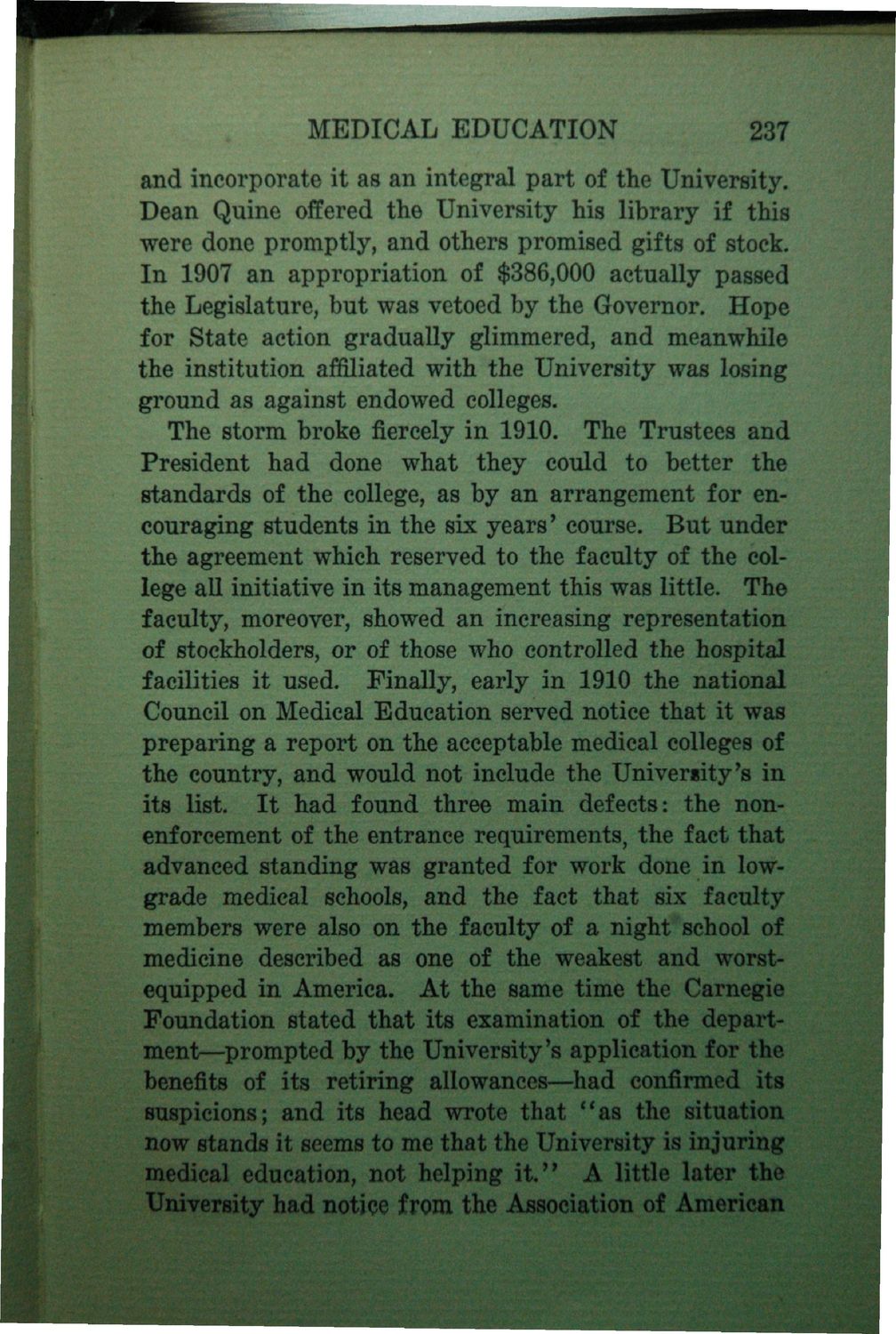| |
| |
Caption: Book - History of the University (Nevins)
This is a reduced-resolution page image for fast online browsing.

EXTRACTED TEXT FROM PAGE:
MEDICAL EDUCATION 237 and incorporate it as an integral part of the University. Dean Quine offered the University his library if this were done promptly, and others promised gifts of stock. In 1907 an appropriation of $386,000 actually passed the Legislature, but was vetoed by the Governor. Hope for State action gradually glimmered, and meanwhile the institution affiliated with the University was losing ground as against endowed colleges. The storm broke fiercely in 1910. The Trustees and President had done what they could to better the standards of the college, as by an arrangement for encouraging students in the six years' course. But under the agreement which reserved to the faculty of the college all initiative in its management this was little. The faculty, moreover, showed an increasing representation of stockholders, or of those who controlled the hospital facilities it used. Finally, early in 1910 the national Council on Medical Education served notice that it was preparing a report on the acceptable medical colleges of the country, and would not include the University's in its list. It had found three main defects: the nonenforcement of the entrance requirements, the fact that advanced standing was granted for work done in lowgrade medical schools, and the fact that six faculty members were also on the faculty of a night*school of medicine described as one of the weakest and worstequipped in America. At the same time the Carnegie Foundation stated that its examination of the department—prompted by the University's application for the benefits of its retiring allowances—had confirmed its suspicions; and its head wrote that "as the situation now stands it seems to me that the University is injuring medical education, not helping it." A little later the University had notjc# from the Association of American
| |